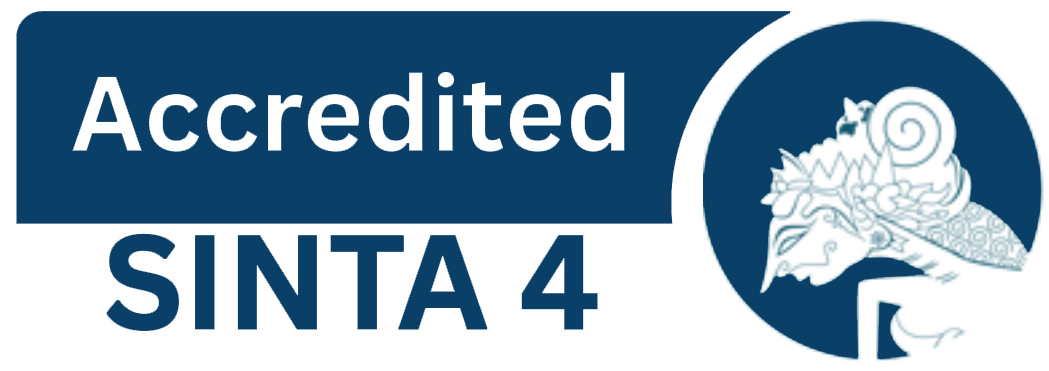AN ANALYSIS OF DEVELOPING ENGLISH TEACHING MATERIALS AT THE VOCATIONAL HIGH SCHOOL IN CIMAHI
DOI:
https://doi.org/10.22460/p2m.v7i1p11-19.1486Keywords:
Learning English Vocational School, Student Needs, ESP Teaching Materials.Abstract
The purpose of this study was to analyze the development of English teaching materials at the vocational high school (SMK) Mohammad Toha in Cimahi, the availability and suitability of English teaching materials to the needs of students, especially teaching materials / materials that students learn according to their level of needs in the world of work especially for SMK students. The research problem formulation is; 1) how is the development of English teaching materials used in vocational high school (SMK) Mohammad Toha Cimahi especially in computer and network engineering (TKJ) majors? 2) what difficulties did the teachers get in developing specific English language teaching materials ?. And the purpose of the study was to develop more specific English Language Teaching Materials in accordance with the field of vocational students at Mohammad Toha Cimahi Vocational School (SMK) especially in the Department of Computer and Network Engineering (TKJ). 2) To find solutions to the obstacles faced by teachers in developing specific English Language teaching materials. This research method uses descriptive qualitative method which aims to describe the development of English Language Teaching Materials in Vocational High Schools (SMK). The results and findings in the field that students have high motivation to learn English, but there are obstacles they face including; 1) The material presented still does not meet the target needs of students for their career world, 2) Authentic material is not yet available, 3) The absence of developers / innovations in the development of teaching environments conducted by schools and teachers so that the material presented still does not answer the needs of students in SMK, innovation has not been made in developing teaching materials at school so the material presented is still textual. Teachers experience difficulties in developing teaching materials because of the lack of knowledge, the absence of experts in the development of teaching materials and the lack of training and reference in the development of teaching materials.
References
Borg, W. R. & Gall, M. D. 1983. Educational Research: An Introduction. Boston, New York, and London: Pearson Education.
Gall, M. D., Gall, J. P. & Borg, W. R. 2003. Educational Research: An Introduction. Deventh Edition. New York and London: Longman.
Tomlinson, B. (Ed.). 1998. Materials Development in Language Teaching. Cambridge: Cambridge University Press
Badan Standar Nasional Pendidikan. 2007. Bahan Sosialisasi Penilaian Buku Teks Pelajaran Bahasa Inggris SMP/MTs, SMA/MA dan SMK. Jakarta: BSNP
Borg, W. R. & Gall, M. D. 1983. Educational Research: An Introduction. Boston, New York, and London: Pearson Education.
Choudhury, N.R. 1998. Teaching English in Indian Schools. New Delhi: S. B. Nangia APH Publishing Corporation.
Gall, M. D., Gall, J. P. & Borg, W. R. 2003. Educational Research: An Introduction. Deventh Edition. New York and London: Longman.
Richard, J. C. & Schmidt, R. 2002. Longman Dictionary of Language Teaching and Applied Linguistics 3rd Edition. Edinburgh: Pearson Education Limited.
Tiwari, S.R. 2008. Teaching of English. New Delhi: S. B. Nangia APH Publishing Corporation.
Tomlinson, B. (Ed.). 1998. Materials Development in Language Teaching. Cambridge: Cambridge University Press.
Borg, Walter R. dan Gall,Meredith Damien, 1989, Educational Research: An Introduction. New York: Longman.
Brewster, J., Ellis, G dan Denis Girard. 2003, The Primary English Teacher’s. Harlow, Essex, England: Peorson Aducation Limited.
Brown, H Douglas.2001. Teaching by principles: An Interactive Approach to Language Pedagogy. New York: A Pearson Education.
Curtain, Helena A, dan Pesola, Carol, A.1988. Languages and Children Making the Match. Foreign Language Instruction in the Elementary School. New York: Addison-Wesley Company, Inc.
E.Sadtono (editor).1997 . The Development of TEFL in IndonesiA. National Seminar Papers. Malang: Penerbit IKIP Malang.
Emzir, 2010, Metodologi Penelitian Pendidikan; Kuantitaif dan Kualitatif. Jakarta: Rajagrafindo Persada.
Erzos, 2007, Teaching English to Young Leraners, Ankara: EDM Publishing Feez, Susan dan Joyce, Helen , 1998. Text-Based Syllabus Design. Sidney: Macquarie University.
Harmer, Jeremy. 2001, The Practice of English Language Teaching. New York: Pearson Ltd.
Hinkle, Eli, (ed), 2005, Handbook of Research in Second Language Teaching and Learning, New Jersey: Lawrence Erlbaum Associate, Publishers.
Huitt, W. (2004). Moral and character development. Educational Psychology Interactive. Valdosta, GA: Valdosta State University. Retrieved [date], from http://www.edpsycinteractive.org /morchr /morchr.html
Lewis, Gordon, 1999, Games for Children, New York: Oxford University Press.
Nucci, Larry, Moral Development and Character Formation In Walberg, H. J. & Haertel, G. D. (1997). Psychology and educational practice. Berkeley: MacCarchan. p.127-157.www. tigger.uic.edu/ ~lnucci/.../nuccimoraldev. Paul, D. 2003. Teaching English to Children in Asia. Quarry Bay, Hong Kong: Pearson longman Asia ELT.
Richards, Jack.C. 2001. Curriculum Development in Language Teaching. Cambridge: Cambridge University Press. Richey, Rita C. dan Klein, James D.2007. Design and Development Research. New Jersey: Lawrence Erlbaum Associates, Inc., Publishers.
Sugiyono, 2009, Metode Penelitian Kuantitatif, Kualitatif dan R&D. Bandung: Penerbit Alfabeta.


















